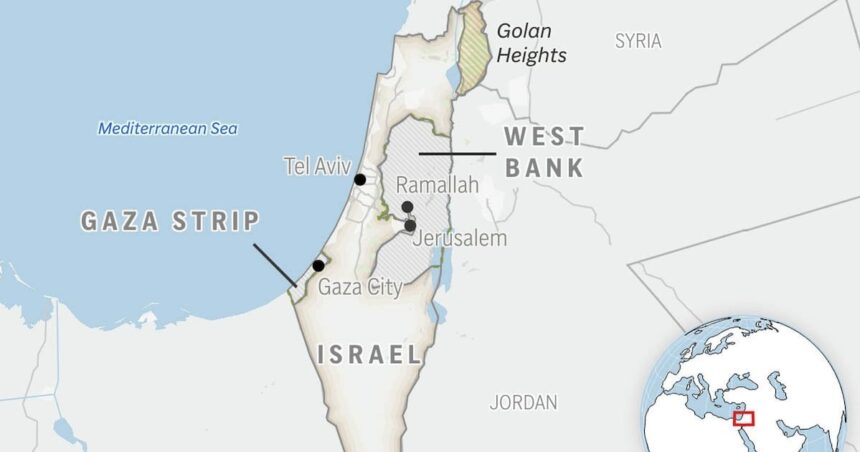As dusk settled over Gaza City yesterday, the aftermath of what witnesses described as “pure chaos” came into horrifying focus. At least 51 Palestinians lost their lives while waiting for desperately needed humanitarian aid—an incident that immediately sparked international outrage and conflicting narratives about responsibility.
“The trucks appeared on the horizon like a mirage,” recounted Mohammed Saleh, 34, speaking via satellite phone from northern Gaza. “People rushed forward—they hadn’t seen proper food deliveries in weeks. Then came the sound of gunfire. People were trampled, shot. We couldn’t even count the bodies properly.”
Gaza health officials report over 200 wounded alongside the dead. The Palestinian death toll since October has now surpassed 30,000 according to the Hamas-run Health Ministry, though these figures don’t distinguish between civilians and combatants.
The incident unfolded along Al-Rashid Street, a coastal road where desperate Palestinians had gathered after hearing rumors of an incoming aid convoy. According to multiple eyewitness accounts, Israeli forces opened fire as crowds surrounded aid trucks. Israeli military officials provided a different account, claiming their troops fired warning shots when the crowd “posed a threat” to nearby forces.
This tragic episode illustrates what United Nations officials have been warning about for months: Gaza’s humanitarian infrastructure has collapsed. An estimated 2.3 million people face severe food insecurity, with the World Food Programme reporting “catastrophic conditions” in northern areas where yesterday’s violence occurred.
I’ve reported from conflict zones across three continents, but longtime humanitarian workers tell me Gaza represents an unprecedented crisis. “The density of the population combined with the intensity of bombardment creates impossible conditions for aid delivery,” explained Fiona Clarke, an emergency coordinator with the International Rescue Committee who recently evacuated from Gaza.
The Israeli military maintains it is working to facilitate aid, pointing to inspection points it operates at border crossings. Yet United Nations officials counter that the amount entering falls dramatically short of what’s needed to prevent widespread starvation. Only about 150 trucks are entering daily—far below the pre-war average of 500 and significantly less than what’s required in crisis conditions.
For context, this disaster is unfolding across a territory roughly twice the size of Washington D.C., now hosting hundreds of thousands of internally displaced persons crowded into increasingly uninhabitable spaces. Water systems have failed, sewage flows in streets, and medical facilities operate without basic supplies.
The diplomatic fallout was immediate. U.S. President Biden called the deaths “heartbreaking” while urging investigation and expanded aid deliveries. The UN Security Council scheduled an emergency session, though previous resolutions calling for humanitarian pauses have yielded limited results.
Arab nations, including those maintaining diplomatic relationships with Israel, issued unusually strong condemnations. Jordan’s Foreign Minister Ayman Safadi described the incident as “a massacre that adds to the horrific toll of Israel’s brutal aggression.”
For Gazans trapped in this nightmare, yesterday’s violence reinforces a devastating reality: even seeking basic survival needs carries mortal risk. In eastern Gaza City, Layla Hamdan, a mother of four, told me via text message: “We fear death from bombs if we stay home. We fear death from bullets if we search for food. Where is humanity?”
Aid organizations are now calling for fundamental changes to the distribution system. The International Committee of the Red Cross proposes creating designated humanitarian zones with guaranteed security. Médecins Sans Frontières demands protected corridors for medical evacuations and supply delivery.
However, previous humanitarian initiatives have faltered amid mutual recriminations. Israeli authorities claim Hamas diverts aid for military purposes, while Palestinian officials and international organizations point to Israeli restrictions as the primary bottleneck.
What’s undeniable is the desperation. World Health Organization officials report rising cases of malnutrition-related conditions previously unseen in Gaza, particularly among children. Without dramatic intervention, physicians warn we’re witnessing the beginning of a preventable famine.
As night fell yesterday, families in Gaza were burying their dead instead of feeding their children. Whatever the competing narratives around responsibility, the international community’s failure to ensure basic humanitarian protections stands as a damning indictment of our collective moral responsibility.
For now, Gazans continue the daily struggle to survive. As one young man told me before our connection cut: “The world watches us die in real time, and still, tomorrow, we must find a way to live.”






